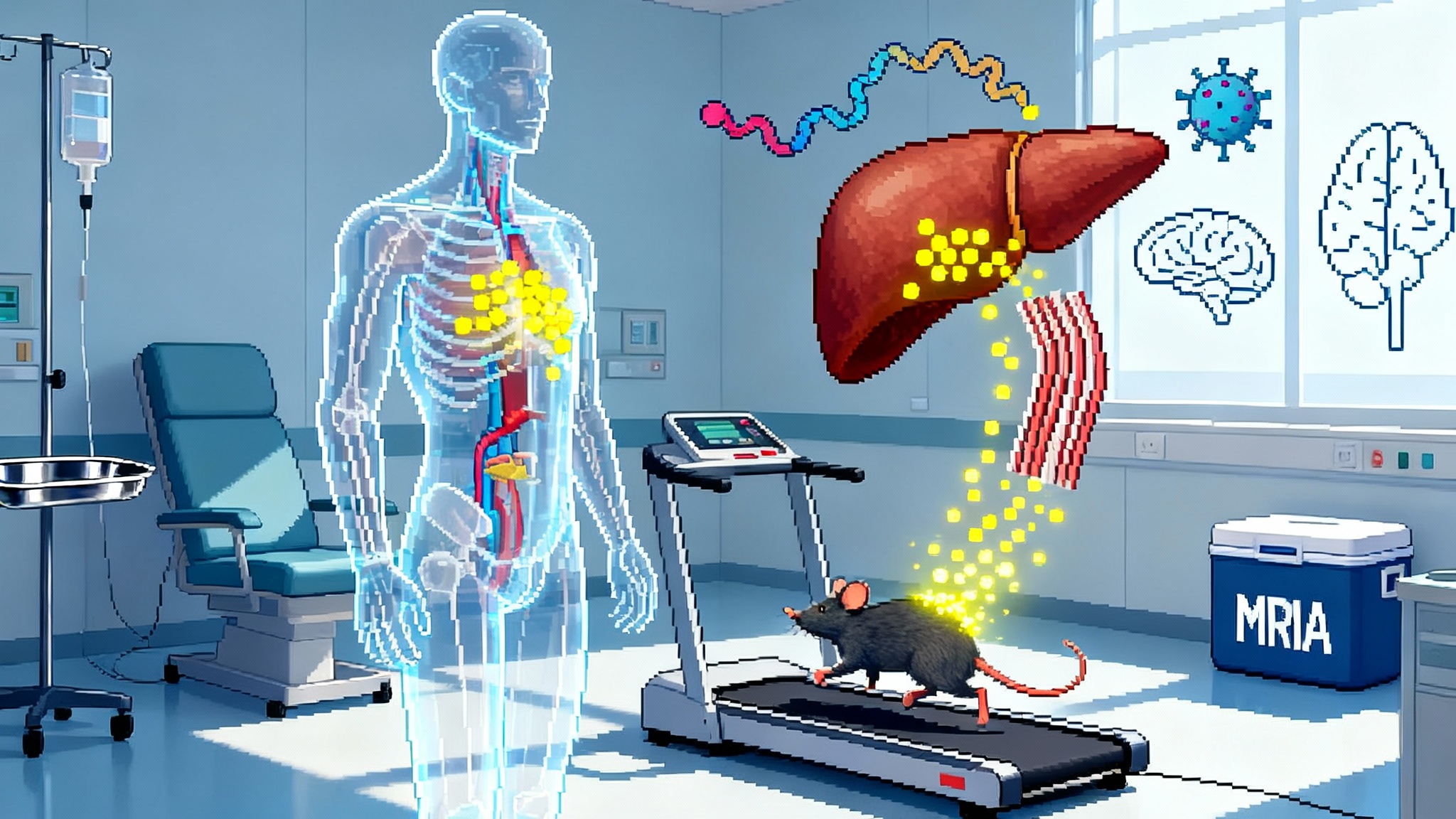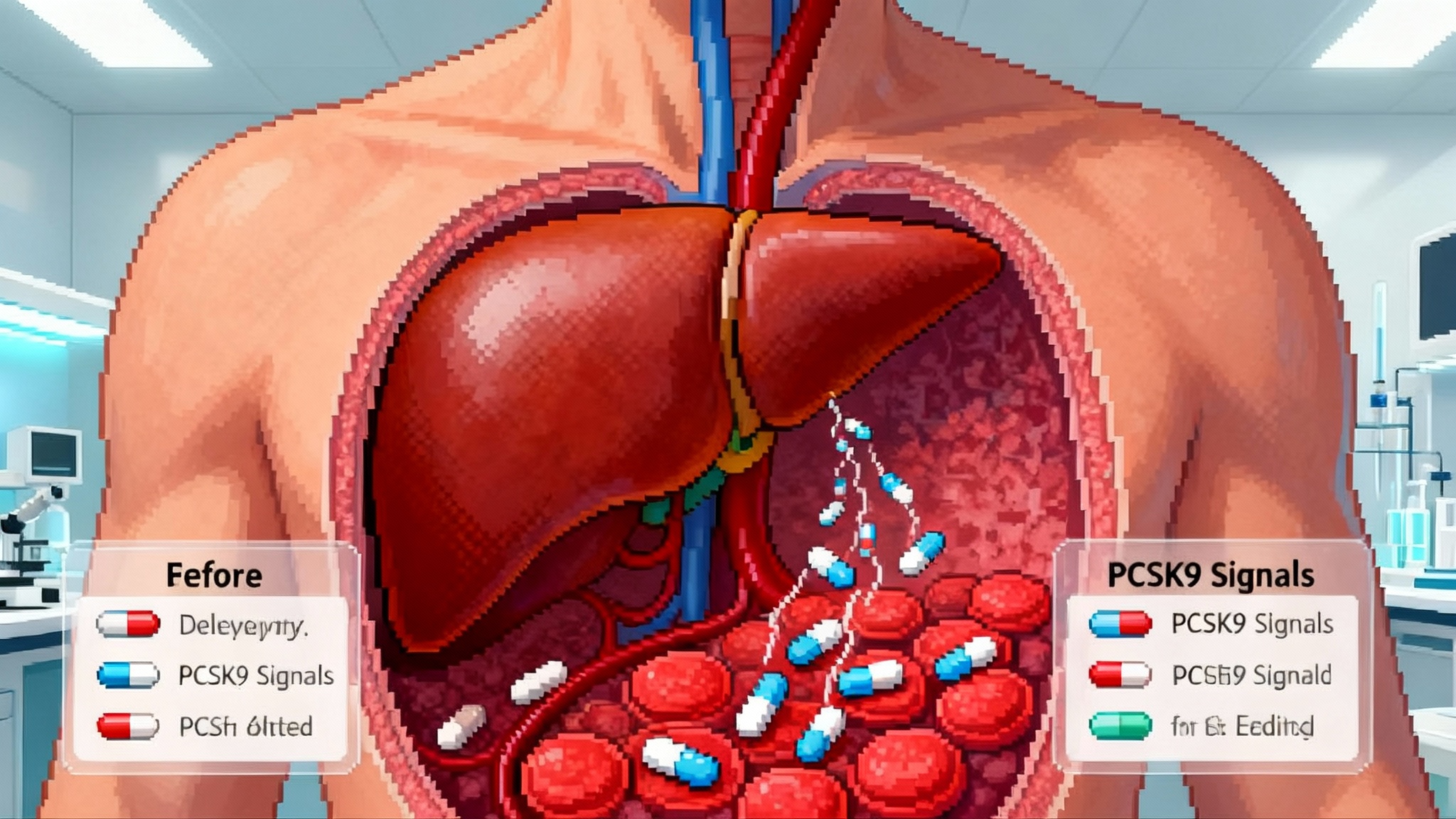Klotho’s breakout: mRNA and gene therapy race to trials
In 2025, Klotho moved from lab curiosity to clinical contender. A lifespan-extending mouse study and XPRIZE Healthspan’s coordinated trial framework now position tunable mRNA to reach first-in-human testing as early as 2026.

2025 put Klotho on the launchpad
In the span of a few months, Klotho moved from a promising but perennially future idea into an actionable path to human trials. On May 12, 2025, XPRIZE announced its Top 40 Healthspan Semifinalists, a global cohort now preparing human studies that aim to rejuvenate muscle, cognition, and immunity in adults aged 50 to 80. Several teams are directly advancing Klotho-upregulation strategies or partnering with groups that are. The competition’s structure, data coordination, and cash support have become an accelerant for translational aging therapeutics, not just a trophy. See the official announcement of the XPRIZE Healthspan Top 40 semifinalists.
At nearly the same time, a peer-reviewed mouse study turned decades of Klotho biology into a single, clear result. In April 2025, Molecular Therapy published work showing that delivering the secreted form of Klotho with an adeno-associated virus in adult mice raised circulating Klotho and extended lifespan by about 20 percent while improving muscle quality, bone microarchitecture, and markers of hippocampal resilience. The team observed multi-system benefits that match exactly what healthspan trials plan to measure. Read the study summary on PubMed: Molecular Therapy Klotho lifespan study.
Two different tracks now converge. AAV-based gene therapies prove that more Klotho can move the needle on survival and function in mammals. XPRIZE is shepherding real-world protocols and outcomes that regulators already understand. The remaining question is not whether Klotho matters, but how to deliver it safely, repeatedly, and precisely in people. That is where mRNA is starting to look like the shortest, safest route to first-in-human testing.
The protein that tells tissues how young they feel
Klotho is a hormone-like protein made primarily in the kidney and choroid plexus. It exists in two main forms: a membrane form that acts as a co-receptor with fibroblast growth factor 23 to regulate phosphate and vitamin D metabolism, and a secreted form that circulates and tunes several age-sensitive pathways, including insulin and insulin-like growth factor signaling, Wnt, oxidative stress responses, and inflammation.
A useful mental model is to think of Klotho as a thermostat that helps tissues hold a youthful set point. With age, the thermostat drifts downward. Lower Klotho correlates with frailty, cognitive decline, chronic kidney disease progression, and immune dysregulation. Restoring youthful Klotho levels is less like swapping an engine and more like turning the dial back to target. The 2025 mouse study’s results are striking precisely because so many systems moved together: stronger muscles with less fibrosis, sturdier bone structure, and signs of a more vigilant, better-balanced brain immune environment.
What changed in 2025
Klotho has been linked to longevity since its discovery in the 1990s, but the field lacked a convincing, contemporary, whole-organism demonstration that restoring Klotho in adulthood could extend life and improve function. The Molecular Therapy paper delivered that. Investigators used an AAV9 vector encoding secreted Klotho, administered systemically and, in some arms, into the brain to ensure central nervous system exposure. Klotho rose in the blood, and treated mice lived longer and aged better by the metrics that matter: movement, muscle architecture, and neurogenesis markers. The data made it easier for clinical planners to say, this is not just a kidney story or just a cognitive story. It is a coordinated aging story.
In parallel, XPRIZE Healthspan put organizational and financial scaffolding around exactly those coordinated outcomes. Semifinalists must show improvements in muscle, cognition, and immunity on validated tests and do it in less than a year of treatment in generally healthy older adults. That pushes therapeutic programs toward modalities that can be dosed, paused, or combined. AAV can still play a role for certain indications, but a reversible, tunable approach looks better for a multi-system aging program. For biomarker readiness across organs, see how SenNet’s 2025 atlas breaks the biomarker bottleneck.
From viral vectors to tunable mRNA
AAV gene therapy has a key strength: durability. It also has two hurdles for healthspan use. First, it is hard to dial down once delivered. Second, repeat dosing can be constrained by anti-capsid immunity. If you are targeting complex aging biology where you may want to increase or taper the dose across months and combine with exercise or immunomodulation, tunability matters.
mRNA flips those constraints. Deliver an mRNA blueprint to the body and cells make the protein for days to weeks, then expression fades. That transient profile is a feature for aging trials. It means you can test a single dose, check safety and biomarker response, and choose to repeat, reduce, or stop. It means you can treat the body as a biofactory for the secreted Klotho protein, using the liver or other tissues as the manufacturing site, and you can add a classical signal peptide to route the protein into the bloodstream. Repeated dosing becomes your dial.
Aging biotechs building Klotho programs are leaning into that dial. Expect designs that target the liver for broad endocrine release, use codon-optimized Klotho transcripts to maximize protein yield, and add secretion signals for efficient export. Some groups are also exploring circular mRNA or modified nucleotides to extend expression and reduce innate immune activation. The goal is simple to state and hard to execute: push serum Klotho into a youthful range for a predictable window, then let it come down, then repeat. Lessons from cell engineering programs such as CAR T cells that do not age underscore the value of durability plus control.
The delivery question you cannot duck
Repeated administration is the core operational challenge. Standard lipid nanoparticles that use polyethylene glycol can trigger anti-PEG antibodies in a subset of people, which may blunt repeat dosing or, rarely, cause hypersensitivity. The field is responding with next-generation chemistries that swap PEG for alternative polymers, adjust PEG chain length and content, or move beyond lipids entirely. Others are testing biodegradable polymers and extracellular vesicles to deliver mRNA payloads with a lower immunogenic footprint.
This may sound like packaging talk, but it is strategy. If your aim is to dose an older adult three or four times per year and sustain Klotho within a therapeutic window, you need a delivery vehicle that tolerates repetition without losing transfection efficiency. That delivery choice will shape your trial cadence and your safety monitoring. Recent geroscience trials with quarterly dosing, such as plasma exchange programs advancing in 2025, show how cadence and logistics become part of efficacy.
Why mRNA could reach people by 2026
Two practical reasons support the near-term timeline.
- Manufacturing and regulatory familiarity: Health authorities have already reviewed dozens of mRNA chemistry and manufacturing control packages. Good Manufacturing Practice scale-up for a secreted-protein mRNA is tractable compared with a bespoke viral vector. Analytical assays for mRNA quality, purity, and potency are standardizing.
- Clinical design fit: An aging trial that doses every one to three months and reads out on serum Klotho, functional tests, and immune biomarkers matches the transient kinetics of mRNA expression. You do not have to commit a participant to a permanent gene transfer to test the hypothesis that raising Klotho rebalances multiple systems.
Add in the XPRIZE Healthspan semifinalist machinery and you have teams, funding, and a shared playbook pushing to begin human dosing. Several groups publicly state plans to submit initial applications in 2026. Given routine preclinical packages for mRNA therapeutics and the biomarker-heavy design XPRIZE encourages, a 2026 first-in-human start is realistic if toxicology and delivery packages clear.
Safety first: what to watch, how to watch it
Klotho is an endogenous protein with broad biology. That is good news for tolerability, but not an excuse to skip careful monitoring. A smart Klotho-mRNA Phase 1 should track four categories of risk.
- Mineral metabolism and kidney endpoints
- Serum phosphate, calcium, and magnesium at baseline and post dose
- Fibroblast growth factor 23, parathyroid hormone, and 1,25-dihydroxyvitamin D to understand axis shifts
- Estimated glomerular filtration rate and cystatin C for kidney filtration, plus urinary albumin-to-creatinine ratio
- Vascular calcification risk via noninvasive imaging in later cohorts if persistent mineral changes appear
- Immune and infusion reactions
- Cytokine panels and complement activation markers in the first 48 hours after dosing
- Anti-carrier and anti-drug antibodies, including anti-PEG if a PEGylated lipid is used, and anti-Klotho antibodies given repeated exposure
- Hypersensitivity monitoring during and immediately after infusion or injection with clear rescue protocols
- Endocrine and metabolic side effects
- Fasting glucose and insulin, hemoglobin A1c, thyroid-stimulating hormone, and lipid panel to identify pathway crosstalk effects
- Weight, blood pressure, and body composition changes
- Central nervous system exposure and balance
- Cognitive adverse event surveillance, mood and sleep assessments, and optional cerebrospinal fluid sampling in advanced cohorts if the program aims for brain delivery
The aim is not to cast a wide net forever, but to front-load the first one or two cohorts with enough data to set safe, repeatable dosing intervals.
Measuring whether it works: a pragmatic biomarker panel
Even a Phase 1 can give signal on multi-system function if it chooses the right markers and timing.
- Exposure: Serum soluble Klotho at multiple time points to map pharmacokinetics and pharmacodynamics. Target a youthful reference range rather than a maximal value.
- Mineral axis: FGF23, phosphate, calcium, parathyroid hormone, and vitamin D metabolites to confirm mechanism engagement.
- Muscle: Handgrip strength, five-times-sit-to-stand, gait speed, and a Short Physical Performance Battery composite. In a subset, mid-thigh magnetic resonance imaging for muscle volume and intramuscular fat.
- Cognition: Working memory and executive function tasks that are sensitive to short-term change, such as n-back or digit symbol substitution, paired with attention tasks. If feasible, add hippocampal-dependent memory tests and resting-state electroencephalography or functional magnetic resonance imaging in small cohorts.
- Immunity: T cell phenotyping for senescent subsets, vaccine challenge titers following a standard immunization, C-reactive protein, interleukin 6, and interferon gamma release in response to recall antigens.
- Biological age: Epigenetic clocks such as GrimAge or DunedinPACE as exploratory endpoints. Use them to triangulate change, not to claim victory.
Schedule these around expected expression windows. For example, if nonhuman primate pilot work shows a 10 to 21 day Klotho peak after dosing, anchor your functional and immune readouts in that window with follow-up at one to two months for durability.
A 12 to 24 month roadmap to first-in-human
Here is a concrete, low-drama plan that a Klotho-mRNA program could run between late 2025 and the end of 2026.
- Q4 2025: Lock Chemistry, Manufacturing, and Controls for the clinical mRNA. Finalize a delivery system with repeat-dosing data in two species. Complete 28 to 90 day Good Laboratory Practice toxicology in rodent and nonhuman primate, including repeat-dose arms and recovery periods. Run a small nonhuman primate pharmacokinetic and pharmacodynamic study to map serum Klotho peaks and biomarker response.
- Q1 2026: Submit an initial clinical application with a single ascending dose design in 50 to 80 year olds. Build a central laboratory plan for Klotho, mineral axis markers, and immune panels. Pre-position rescue meds and anaphylaxis protocols at sites.
- Q2 2026: Dose the first sentinel participants. Escalate if safety holds and serum Klotho rises into the prespecified target band. Add a multiple ascending dose cohort if kinetics support it. Consider an optional vaccine challenge sub-study in later cohorts to probe immune function response.
- Q3 to Q4 2026: Expand to a Phase 1b with repeated dosing at one or two intervals that best balance exposure and tolerability. Layer in functional measures and exploratory brain or muscle imaging at a single center with consistent instrumentation. Begin a parallel healthy volunteer extension to test at-home or local clinic dosing workflows, since real-world cadence will matter.
- End of 2026: Decide on first patient populations. Candidates include aging-related frailty, early cognitive complaints with preserved daily function, chronic kidney disease with low Klotho, or immune nonresponders to routine vaccines. The choice should be informed by biomarker and functional deltas observed in Phase 1, not by brand positioning.
Who is pushing this forward
- Academic-industry bridge builders: The 2025 Molecular Therapy study brings a long-standing Klotho research community into a modern gene therapy playbook and gives developers effect sizes to plan around.
- XPRIZE Healthspan semifinalists: Among the Top 40 are teams explicitly aiming to raise Klotho and teams whose combination protocols could easily incorporate a Klotho-mRNA. One semifinalist partner has publicly discussed an mRNA program designed to upregulate endogenous Klotho, paired with a clinical delivery partner preparing to run multi-domain functional testing. The prize’s data coordinating center and milestone gates effectively pre-write parts of the clinical operations plan for these programs.
- Clinical-stage adjacent: Companies pursuing Klotho for specific diseases, such as neurodegeneration or amyotrophic lateral sclerosis, are building manufacturing and safety dossiers that healthspan programs can leverage. Even if the indications differ, a shared understanding of exposure, immune reactions, and mineral balance will pay dividends.
The bottlenecks that matter
- Repeat dosing without loss of efficiency: New lipid and polymer systems need to show clean performance across multiple injections without accelerated clearance or neutralization.
- Clean endpoints in healthy older adults: Aging trials must pick tests that move over weeks to months but are not confounded by practice effects. Harmonized protocols and centralized reads will help.
- Manufacturing scale and stability: Clinical-grade mRNA that remains stable in supply chains that reach community clinics is not optional if these therapies are to reach more than a few hundred participants.
Why this moment is different
The field has had longevity proteins, animal data, and enthusiasm before. What it did not have was synchronization. In 2025, the biology, the preclinical proof, and the clinical framework clicked into the same year. A single publication put a 20 percent lifespan gain beside multi-tissue improvements in adult mice. A global competition forced therapeutic programs to design for muscles, brains, and immunity at once. And mRNA gave developers a dial instead of a switch.
It is still early. Safety and delivery will determine the pace, and not every Klotho program will make it to people. But the shape of a first-in-human trial is now less a thought experiment and more a checklist with dates. If teams convert 2025 momentum into clean toxicology, repeatable delivery, and a serious biomarker plan, the first older adults could receive a Klotho-mRNA injection in 2026 and show measurable gains in strength, attention, and vaccine responsiveness within months.
Aging biology is rarely about a single lever. Klotho may be an exception that proves the rule, a convergent control that shifts multiple systems with one nudge. We will find out soon. The last step is not discovering that the dial turns. It is teaching ourselves how to set it just right, and then doing it at scale.








